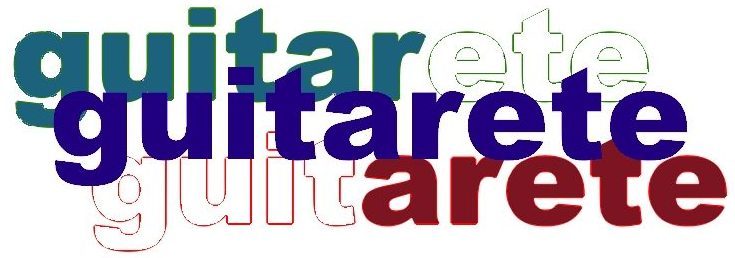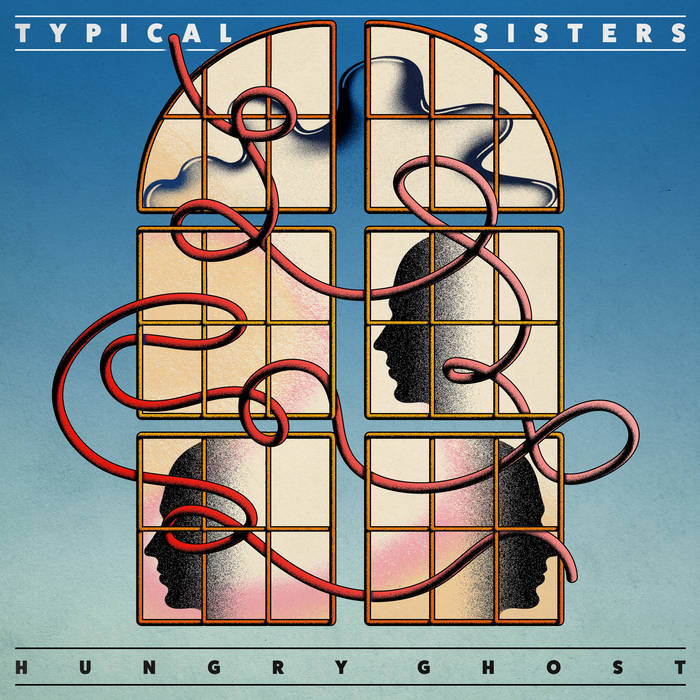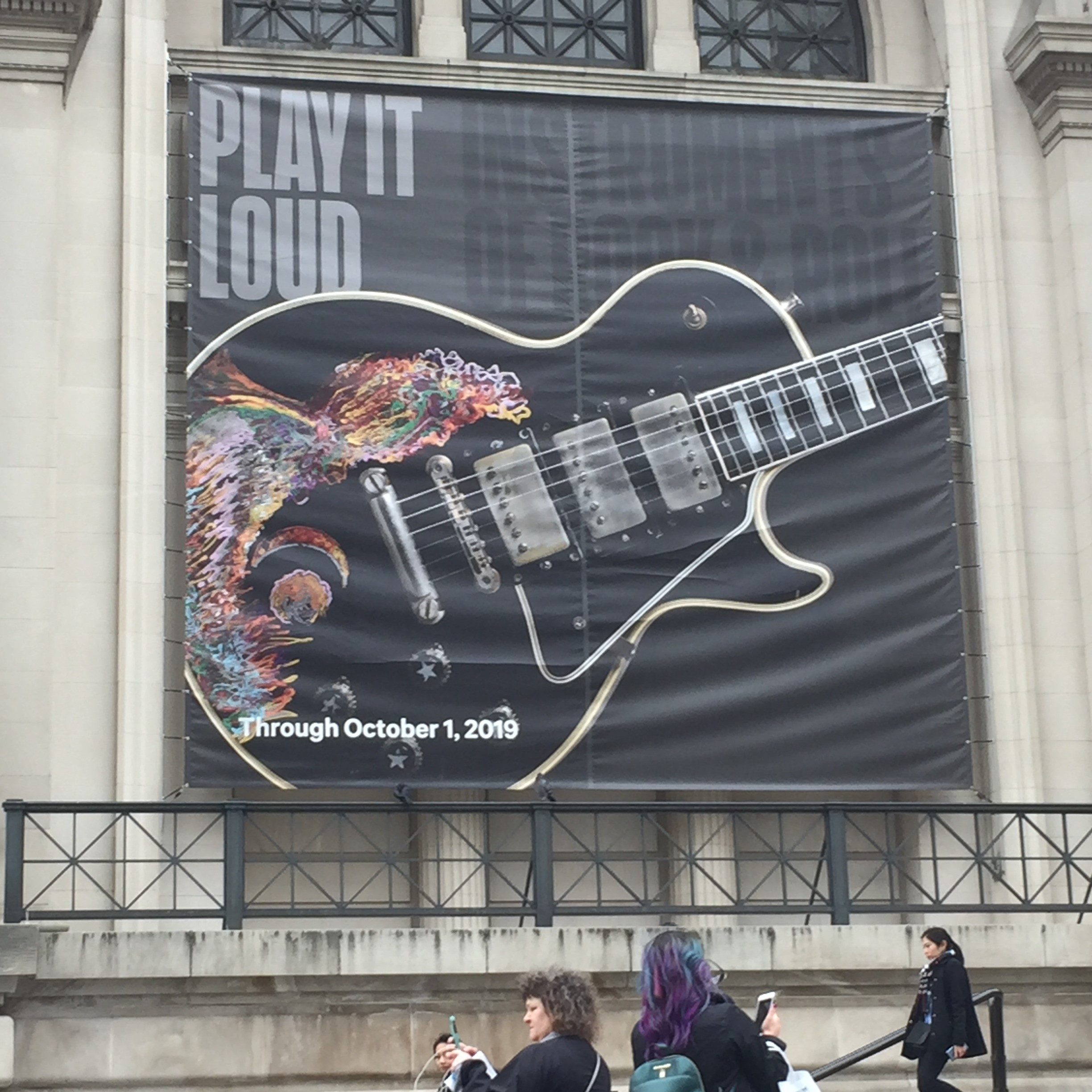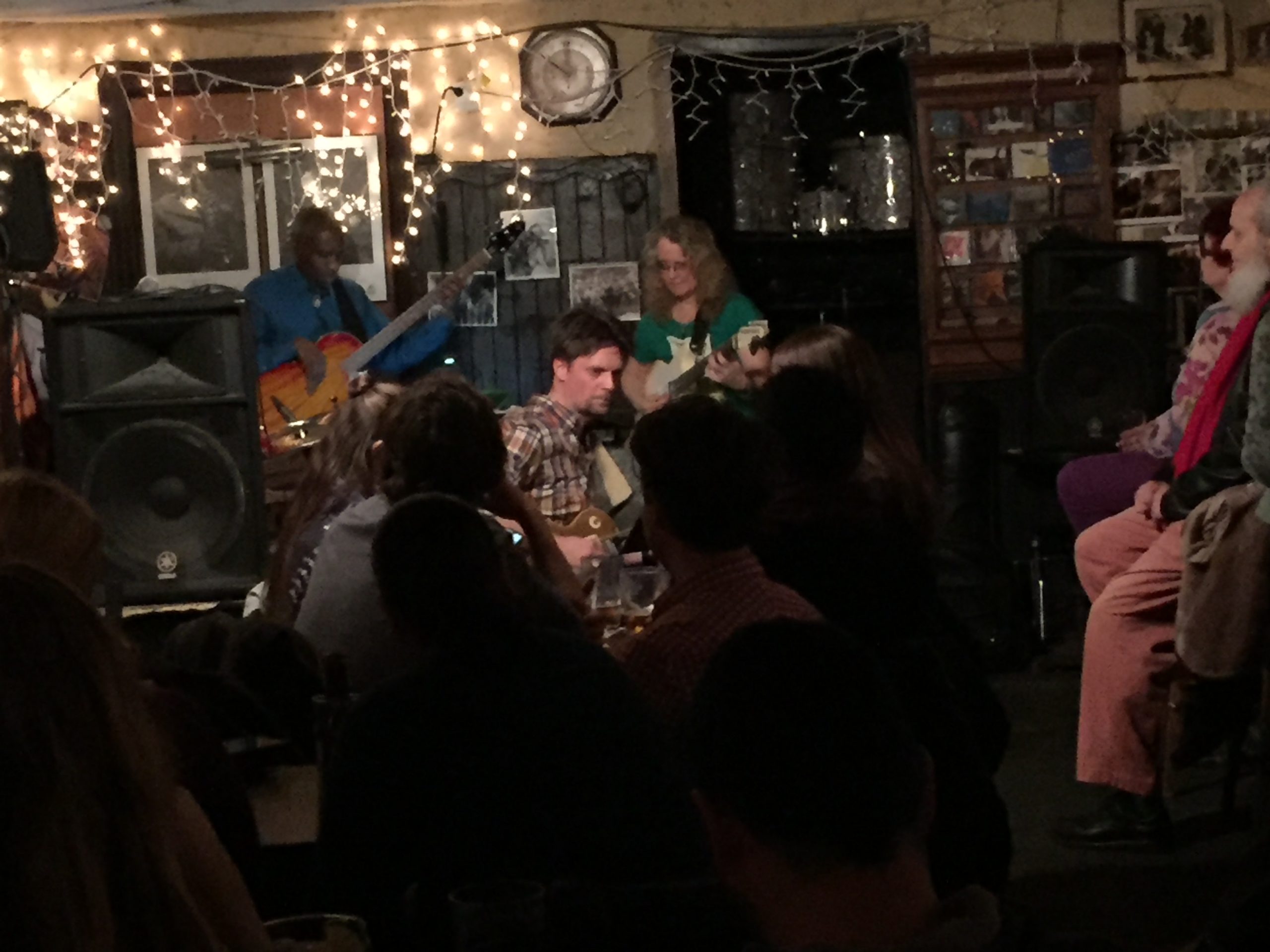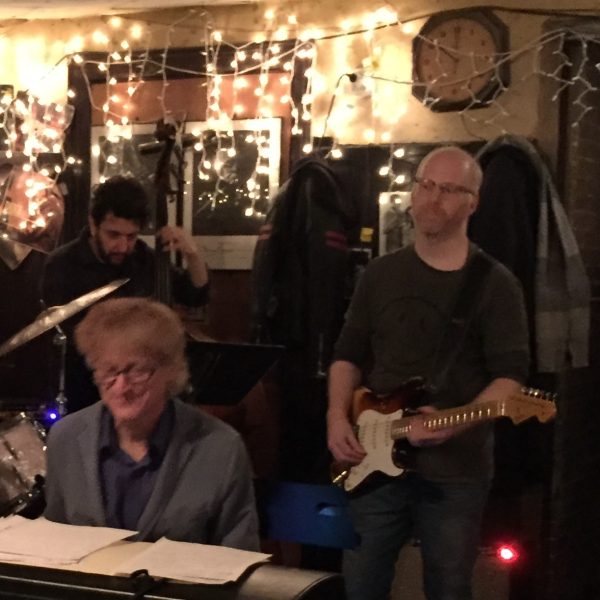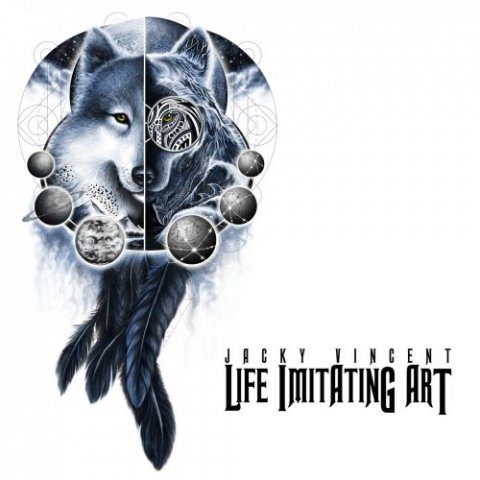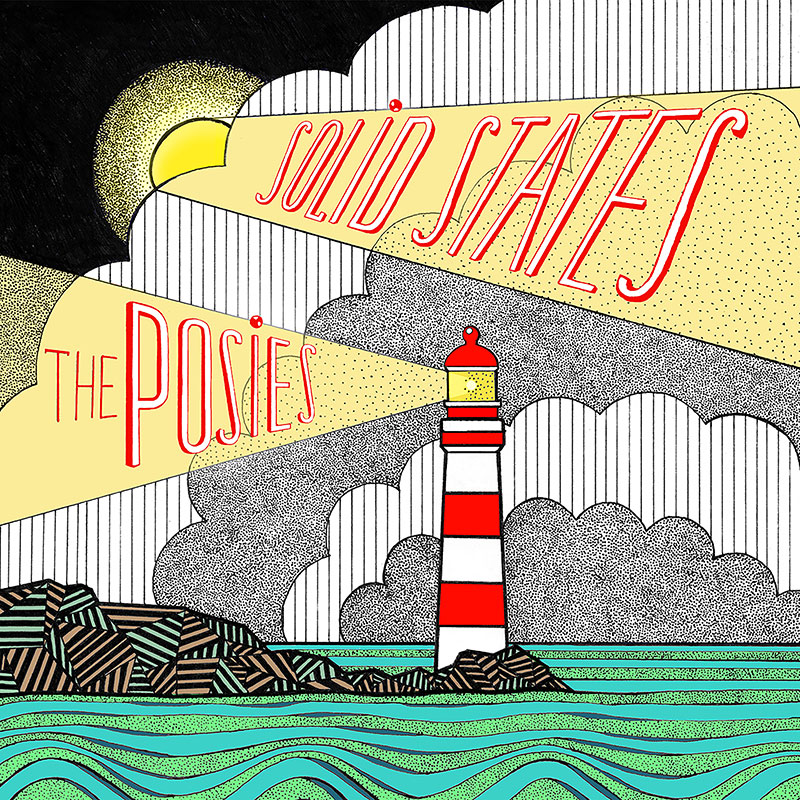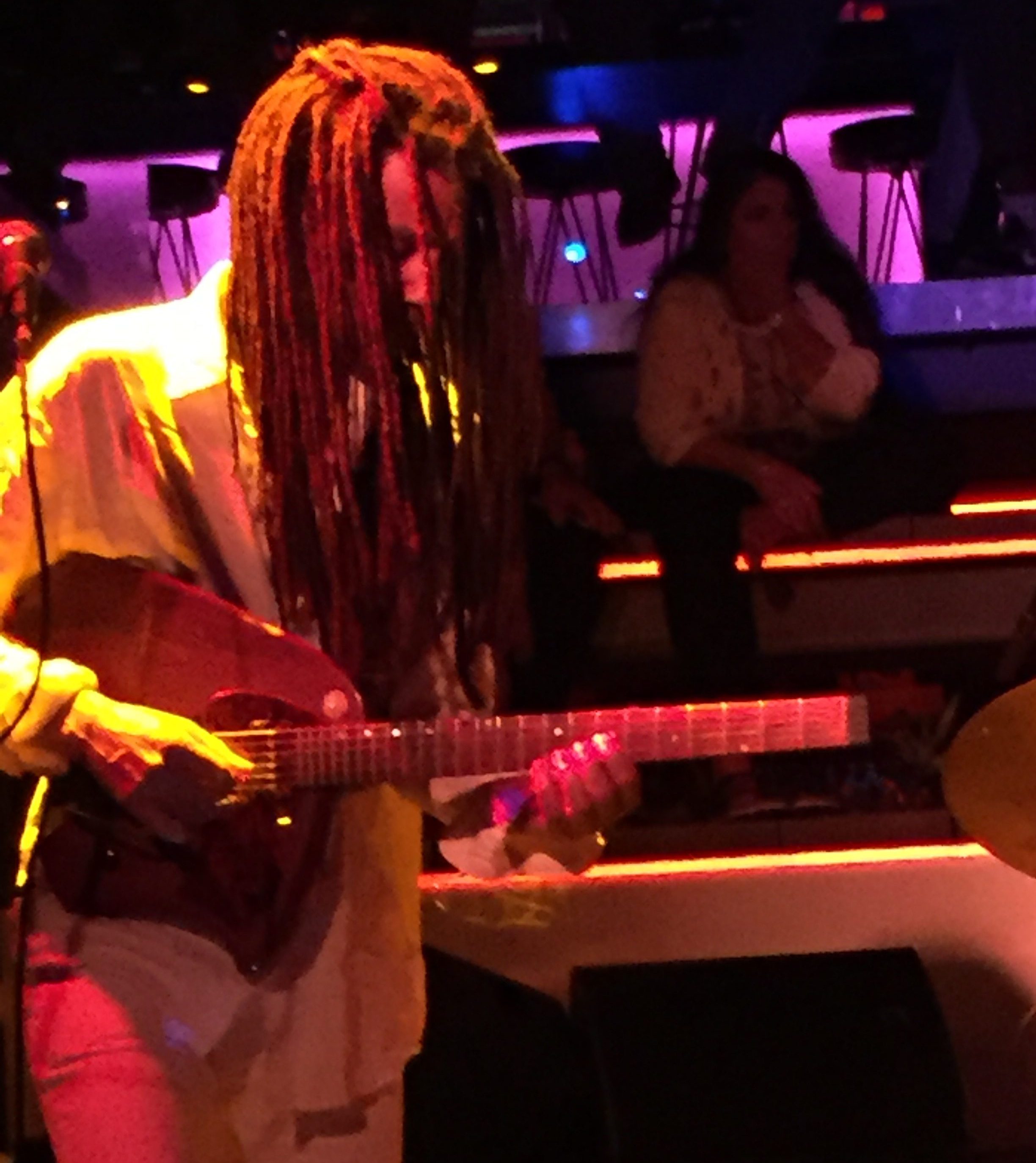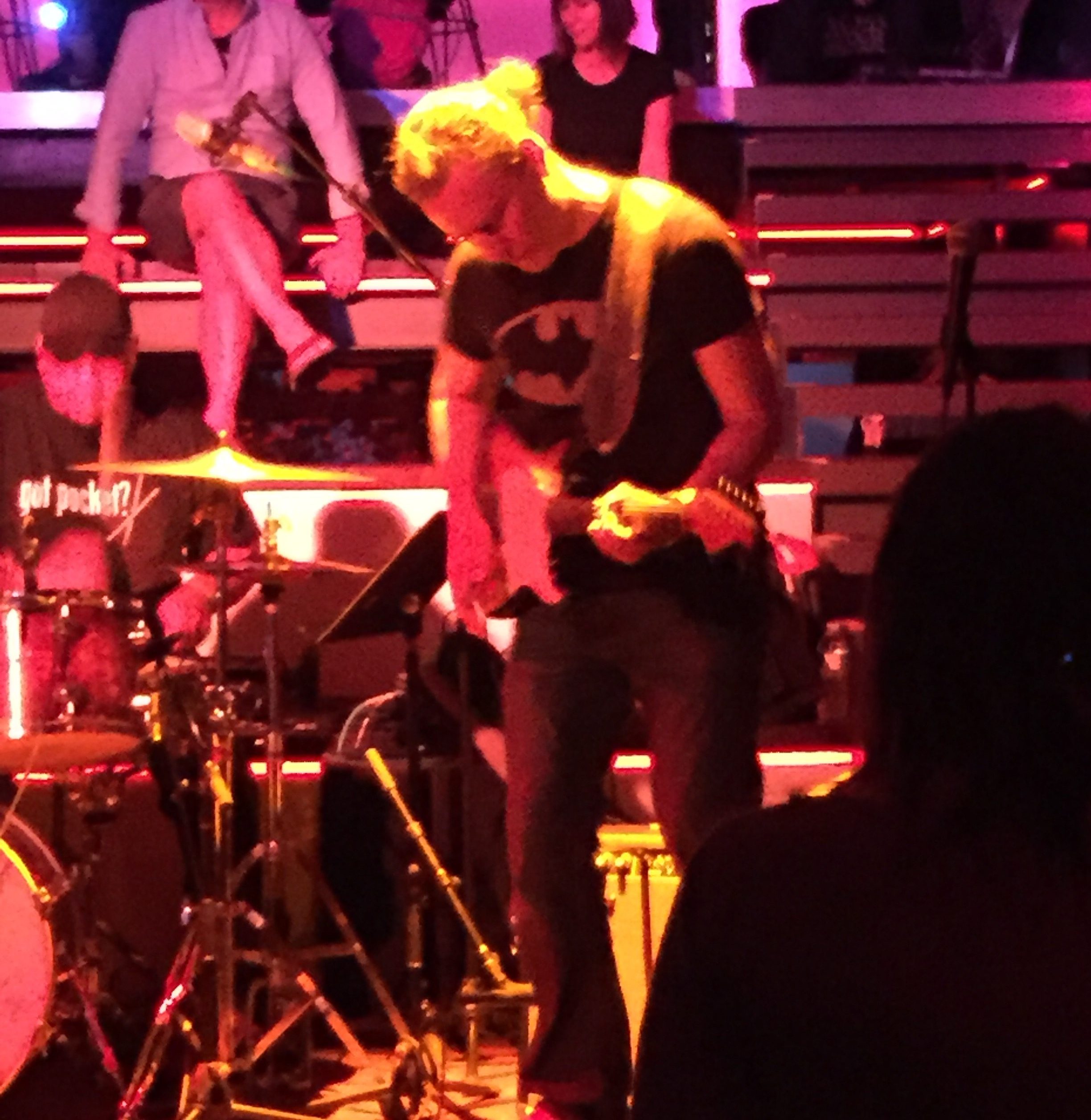The Stray Cats breakout track and video hit may well be the defining track of the first wave of retro rock. It’s now a classic in its own right. Brian Setzer masterfully accompanies his throwback-cool vocals with clean-toned, slapback-echoed guitar moves that include jazzy sliding chords; rockabilly triads extended with sixths; and two tight, confident solos—not to mention a motor of a main riff. Released decades after the peak of rockabilly, “Rock This Town” might have seemed, at first, like the product of one more group of costumed MTV opportunists, but Setzer, along with bassist Lee Rocker and drummer Slim Jim Phantom, showed confidence that rockabilly was as enduring and vital as a lovingly cared-for 1950s hot rod with a tank full of fuel.
 Alan Barry
Alan Barry
Typical Sisters — Hungry Ghost
On Hungry Ghost, released March 2019, Typical Sisters explores avenues for creating urgency beyond of the borders of well-defined genres. The more I listen to Hungry Ghost, the more I hear jazz in a generalized way and the less I hear anything like a bebop line. If one has to categorize this album, it probably makes most sense to call it jazz, but it’s jazz in the sense of connecting to jazz tradition and not in the sense of sounding like traditional jazz. That insufficient characterization shouldn’t suggest that Hungry Ghost is generic. Typical Sisters sophomore album is an expansive, challenging, and rewarding collection that reveals progressively deeper charms through repeated listening.

Eric Clapton’s Crossroads Guitar Festival returns in 2019!

With the announcement that Eric Clapton is again firing up the Crossroads Guitar Festival in 2019, it’s worth taking a look back at some of his previous Crossroads performances. 2019 will bring the fifth incarnation of Clapton’s festival, which benefits the Crossroads Centre, a substance-abuse treatment facility he founded in the late 90s. Earlier Crossroads Festivals were held in 2004, 2007, 2010, and 2013. The festival always includes a variety of top-notch guitar talent, of course, but I’m choosing to focus on Clapton himself in the link selections below.
Here’s a thought I’ve been having for a while about Clapton’s live performances:
Play It Loud @ the Met! 4/8/2019 to 10/1/2019
Happily and unsurprisingly, there will be plenty on display to fascinate and inspire guitarists and fellow travelers at the Metropolitan Museum of Art’s soon-to-open exhibit, Play It Loud: Instruments of Rock & Roll. The exhibit opens April 8, 2019 and runs through October 1, 2019.
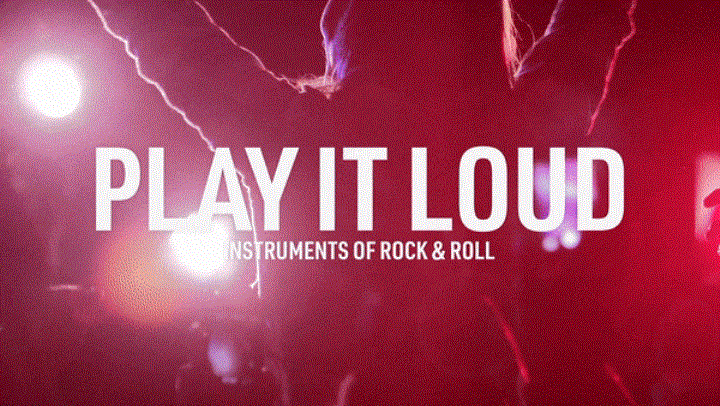
The Met, of course, is stunning at all times. With this exhibit, it will enter realms of awesomeness it has explored little, if at all. Nowhere else will you be able to see this:
and this:
Afro-Polka All-Stars—55 Bar, December 30, 2018
Featuring guitarists Sheryl Bailey and Anders Nilsson
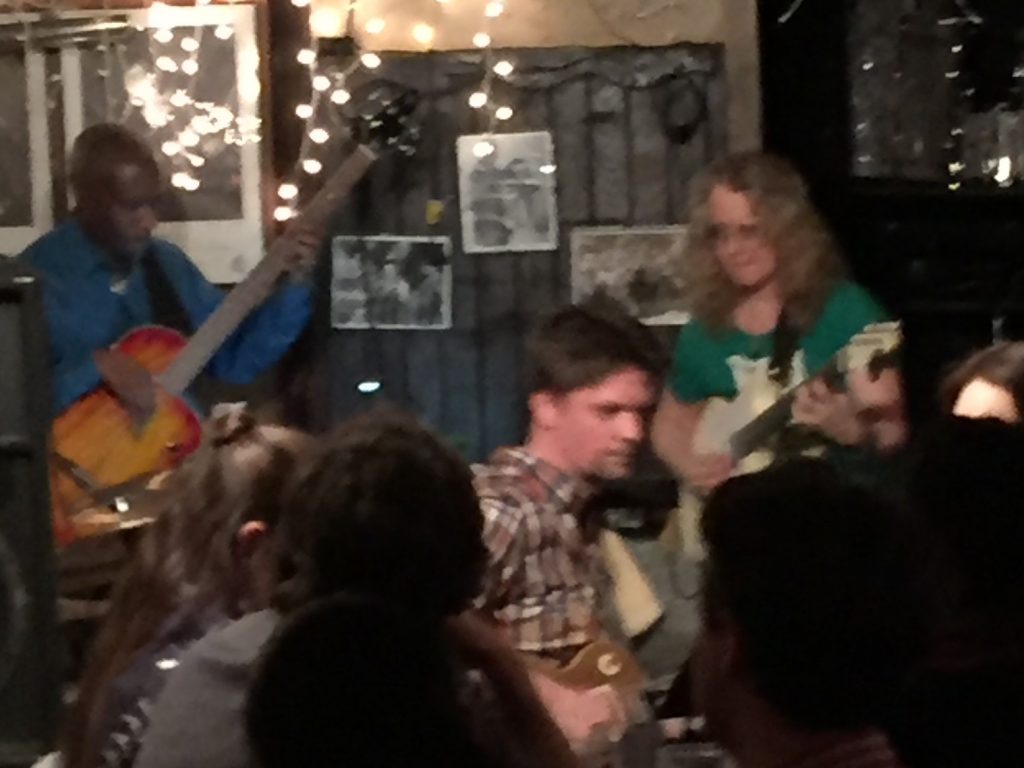
Drummer/composer/world-music explorer Maciek Schejbal’s Afro-Polka project is based on the inspired, if unlikely, idea that polka, elements of African pop, and jazz guitar improvisation can be fused into a complementary whole. On the penultimate night of 2018, Schejbal, bassist Jerome Harris, and the potent guitar team of Sheryl Bailey and Anders Nilsson realized Schejbal’s thesis. Throughout three sets in front of a Sunday night, early-show, standing-room-only crowd, the Afro-Polka All-Stars explored the landscape of a new musical moon—one that offers frequent surprises, while also maintaining contact with the ears of ordinary Earthlings.
Oz Noy Quartet – 55 Bar, December 25, 2018
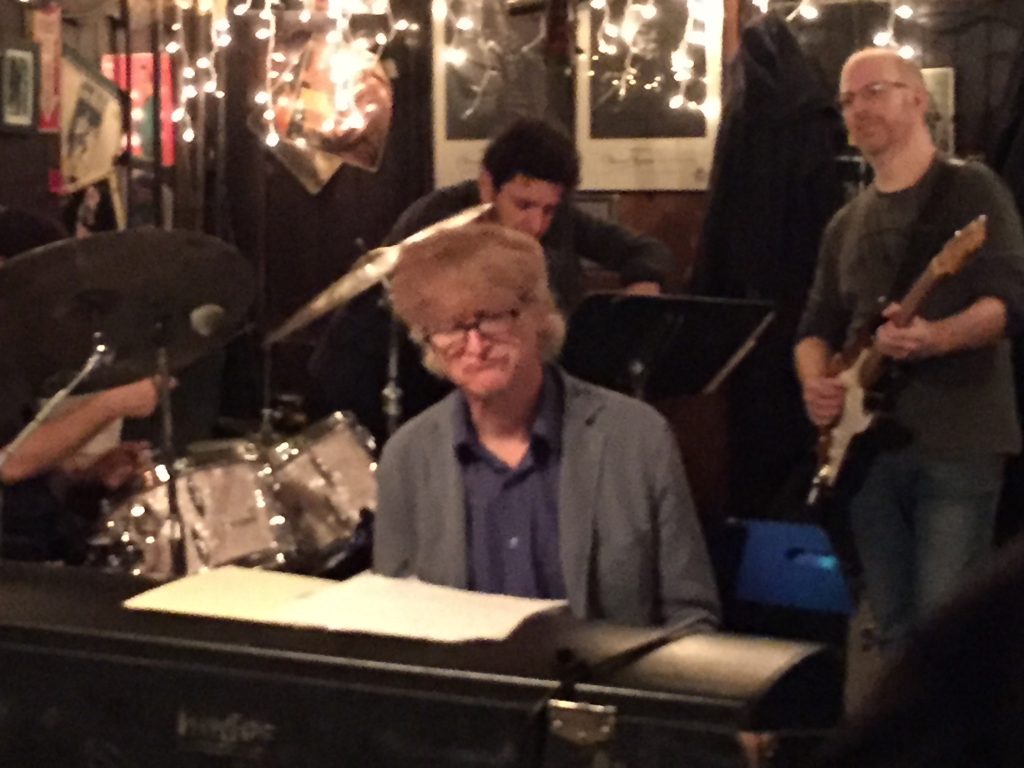
Oz Noy has said of his music, “It’s jazz, it just doesn’t sound like it.” On his recent quartet gig at the 55 Bar, it could be argued that Oz’s music sounded a step or two closer to what most ears accept as jazz. Accompanied by Omer Avital on stand-up bass, Anthony Pinciotti on drums, and David Kikoski on electric piano, Oz explored a range of jazz standards, plus a classic R & B tune, hitting a couple more jazz signifiers than usual, and extending the range of his boundary-pushing-yet-accessible style.
Jacky Vincent–Life Imitating Art: High-Speed Guitar Engine Meets Synths & Beats
Times not recommended for listening to Jacky Vincent’s Life Imitating Art: basically anytime you want to chill. It’s not that the late-era Shrapnel Records alum is relentlessly hyped through his whole new album—relaeased August 31, 2018—but he never goes long without cranking open the throttle on his seeming V12 guitar engine. Even on the less bombastic tracks within the 40 minute collection, there’s relatively little that can reasonably be called “unhurried” or “restrained.” Nonetheless, for those familiar with Jacky Vincent from his work in the bands Falling in Reverse and Cry Venom (post-hardcore and power metal, respectively), Life Imitating Art is a different intensity.
Album opener “Awakener,” “Nowhere to Look but Inside,” and “Soul Shines Through,” all incorporate big synth sounds that would be at home in a dance club or at an arena-pop show. In some places, I wondered whether he is using a guitar-synth controller of some kind. Replete with sudden shifts in texture; staccato heavy rhythm guitars sparring with complex synths; a neoclassical breakdown; and a brief breakneck solo excursion over a pumping dance beat, among other sections, “Awaken” lays it on thick from the start. There’s a lot of motion and contrast in the tune, and I could see Vincent going over well performing music like this on a bill with EDM acts and lots of bright lights. Nothing else the album throws in the kitchen sink quite as hard, perhaps for the overall good of the album, but each of the synth heavy tracks features interesting textures and shifts. The synth soloing on “Nowhere to Look but Inside” sounds like it could have been done with a guitar-synth controller; some of the synth lines are shaped much like Vincent’s often deployed sweep moves. With abundant guitar harmonies and high note-density runs, and with contemporary touches in lower proportion than in the album’s first two tracks, “Soul Shines Through” and “Grand Uppah” both veer into classic Shrapnel territory. Vincent’s chops are both undeniable in themselves and a key piece of the adrenaline-hyped mood he creates. Arguably the signature mood of Life Imitates Art, Vincent’s energy is thrill-ride, skateboard-getting-some-air, killer gymnastics routine, TIE-fighter battle variety; there’s little-to-no darkness to be found, something that separates Vincent’s music on this album from the gothic currents of many of the Shrapnel Records classics. Also contributing to the upbeat vibe of these tracks is the eschewing of frequency-eating, down-tuned, distorted rhythm guitars; Vincent’s charge is more power metal than djent.
The Posies–Solid States

Someone once told me a story about a bunch of college friends who had an inside joke around the line “The Posies suck.” If I understood correctly, this bunch had seen an early, raw, and, no doubt, very cool Nirvana show at their college, and, as a result, viewed themselves on the cutting edge of where rock was headed in the early 90s. The Posies, who played the same college circuit, were less of the moment. With the signature vocal harmonies of principal members Jon Auer and Ken Stringfellow, the Posies were never really a grunge band, even when they turned up their guitars and stomped their fuzz pedals more frequently in the 90s. However, there has never not been a time when they put the power in their power-pop with soulful, creative guitar playing. On the road for a big chunk of 2018, and having appeared recently in New York City, the Posies are still not of the moment, but they endure heartily with their core intact.
Regardless of what a bunch of proto-hipsters may have thought, the Posies do not suck. Now well into their third decade working together, Auer and Stringfellow are most recently out with Solid States, a new album that may be their best collection of songs since their underappreciated 1993 classic, Frosting On the Beater. (Solid States was released April 29, 2016—this is a new edit of a piece written in 2016.) The Posies have always been poppy, in the best sense. At their best, a Posies record flows from hook to hook. Solid States is no change in this respect; the songs are well-structured, melodic, and catchy. There may be stray hints of prog and art rock (“The Sound of Clouds”), but there are no long jams or meandering ambient grooves.
Harriet Tubman, featuring Brandon Ross, at the Jazz-Rock-Funk Throwdown, June 2018
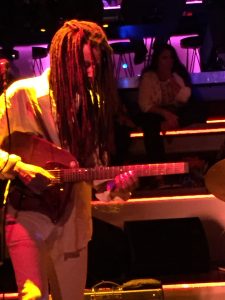
Harriet Tubman’s music was nearly entirely new to me. Before the Alternative Guitar Summit, I checked out a few tracks from Araminta, Harriet Tubman’s latest album, but I had no time for a deep dive. Consisting of bassist Melvin Gibbs, drummer J.T. Lewis, and guitarist Brandon Ross, Harriet Tubman has now been a band for more than 20 years. The group’s members each have varied resumes full of prestigious gigs. Given the members’ respective artistic ranges, it would be slightly arguable to say that Harriet Tubman is the most “alternative” or out-there project for any of them, but this group’s musical vision is undisputedly way past the borders of anything that can be reasonably considered mainstream. The imposing electric bass presence of Gibbs—who is equally able to lay down a deep ostinato; jam a fuzzed-out single-note solo; and loop some noise—and the highly sympathetic drumming of Lewis created an environment in which Ross explores sound and melody free of pretty much every known conventional guitar trope.
Adam Rogers at the Jazz-Rock-Funk Throwdown, June 2018

Leading the trio known as DICE, guitarist Adam Rogers drew material from the group’s eponymous album for the second set of the Jazz-Rock-Funk Throwdown. The onstage trio also included bassist Fima Ephron and drummer J.T. Thomas, the latter of whom was subbing for regular drummer Nate Smith.
On one level, DICE’s music was the most straightforward fare of the night. Equipped with just a Strat, a single pedal of some kind, and a modest-sized blackface Fender amp, Rogers stood tonally apart from his guitarist mates in not making use of an array of effects boxes and expression pedals. The guitar tones he applied could have comfortably satisfied a Stevie Ray Vaughn-esque blues rocker. Even though his bridge-pickup tones can get edgy, Rogers undeniably Fender sound has both tautness and girth. And, Fima Ephron’s fat, steady bass grooves would have, likewise, been at home in a more traditional blues-rock setting. But, this being the Alternative Guitar Summit, nothing was truly straightahead and traditional.
